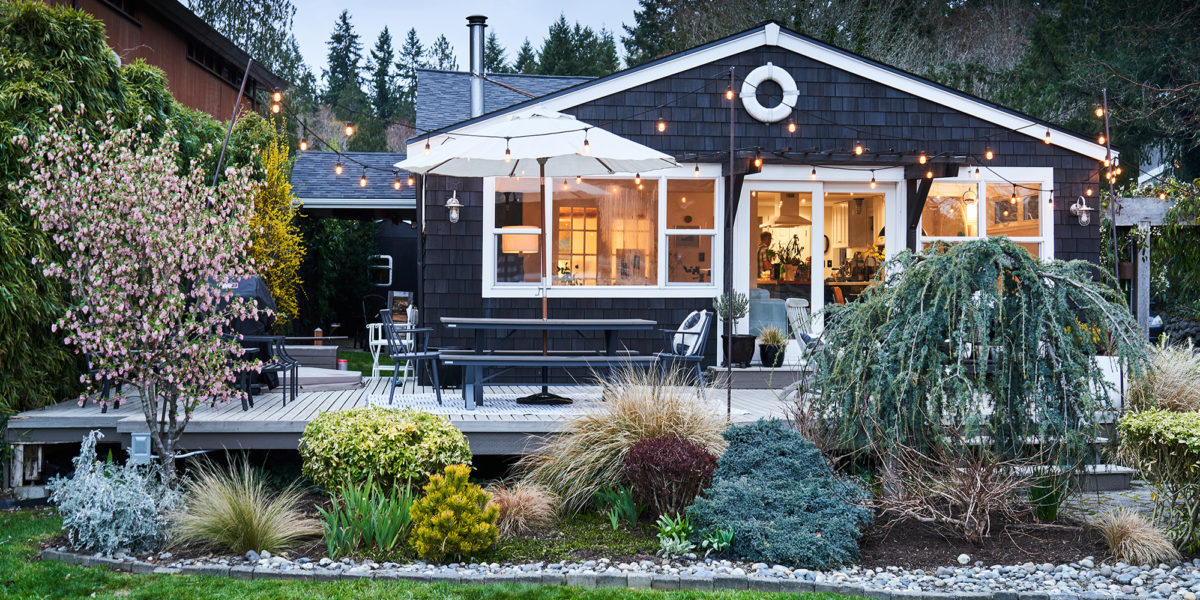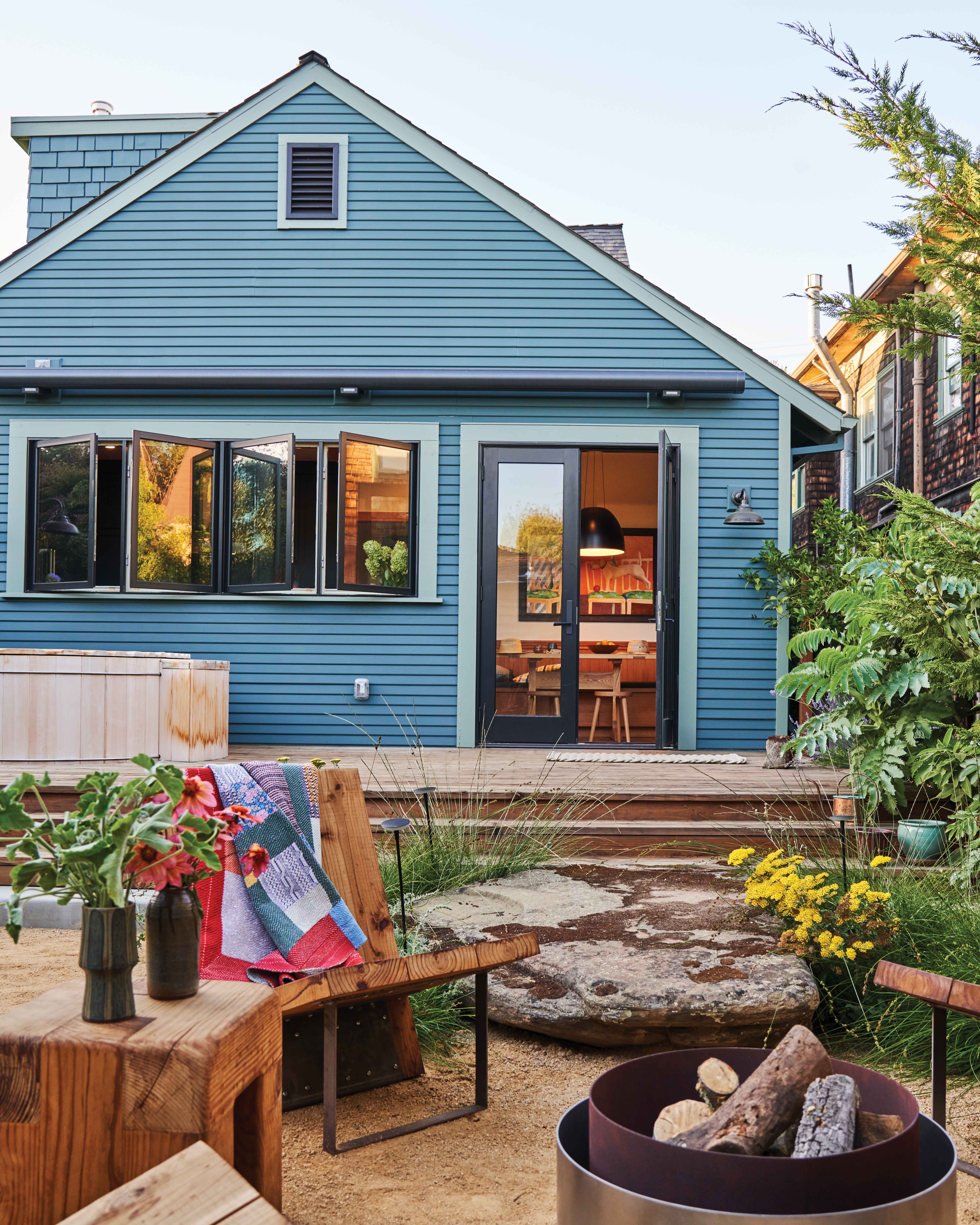
These Are the 3 Things You Need to Do When Painting Your Home’s Exterior (Plus, What Not to Do)
The dos and don’ts, according to pros.

When my husband and I bought our home, we knew we wanted to paint the worn, slightly mismatched exteriors. From afar, the tan paint, black shutters, and white trim look cohesive and neutral. But up close, it was a different story. The tan color looked slightly different in different areas of the house, and you also also see sections of paint chipping away.
We knew next to nothing about the process, but figured it couldn’t be too different from painting inside your house—right? As we started planning, we learned that it’s actually a much bigger job than we expected. If you’re thinking about painting your house, here’s what you need to know:
Do: Wait for the Right Time to Paint Your House
According to Andre Kazimierski, CEO of Improovy Painters Denver, temperature and weather can impact how paint adheres to a surface. In other words, even if you’re ready to take the plunge and paint your house, it’s important to wait for optimal conditions. “Typically, your paint will list the optimal temperature range for a good coat,” he says. “General advice tends to be between 50 and 70 degrees, although 40 to 90 degrees will work as well.”
Do: Book a Professional in Advance
Painting your own home can save time and money, but if you want to book a professional, know that it might be weeks (or even months) before they can start your project. “Too often we have people who call and want work done that week,” says Tila Lee, owner of Pretty in Paint. While some companies may be able to fit you in on short notice, Lee says it’s standard to wait at least two to four weeks—or longer, depending on your climate and the local demand.
Do: Consider the Rest of Your Home—and Other Homes in Your Neighborhood
When choosing exterior paint colors, another factor to consider is the rest of your home. You’ll want to make sure the color complements (or at least doesn’t clash with) your roof and any stone or brick, if you have them. If your stone is an earthy color like beige, for example, then Michelle Marceny, lead color consultant at The Color Concierge, recommends opting for earthy colors, such as warm whites and beiges.
Lee also recommends looking around your neighborhood before you commit to a color. You may not want to be the exact same color as your next-door neighbors, but you also may not want to stick out like a sore thumb in a sea of neutral houses.

Thomas J. Story
Don’t: Skip Color Testing Before Painting
Marceny says the most common mistake homeowners make with exterior paint is picking colors that are too light. “The bright sunshine washes out paint colors,” she explains, adding that this is especially true with white paint colors and in sunnier areas, like the southern U.S. or in the mountains where the sunlight is stronger.
The key metric to be aware of is a color’s light reference value (LRV). According to Marceny, an LRV of 100 is pure white, and 0 is the darkest black. As a general rule, Marceny recommends an LRV between 70 and 75 for whites and an LRV between 60 and 70 for colors.
But definitely test your paint colors out! You can get away with a lighter color—or higher LRV—if your house doesn’t get much sun.
Don’t: Even Think About Paint Matching
Even though many companies claim they can match anything, Marceny warns against paint matching. “It’s not 100% accurate,” she says, warning that white paint colors are especially notorious for bad matches—they often turn green. Your best bet is always to choose a paint color from the company you plan to buy from to avoid surprises.
This story originally appeared on Realtor.com/living.
Read the Current Issue Here!
Get one year of Sunset—and all kinds of bonuses—for just $29.95. Subscribe now!
